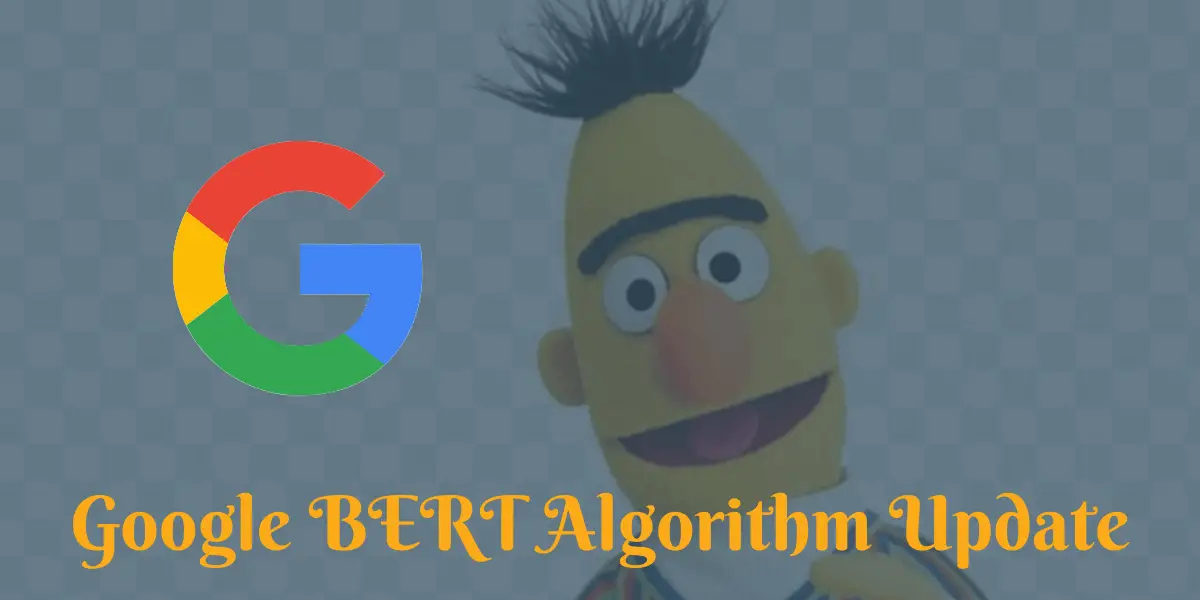Google BERT Algorithm Update: How to Improve Google BERT Score?
Google BERT Algorithm Update: How to improve Blog Post Score?

Google sees billions of searches each day and 15% of them are rare queries. This brings the need to return results for these non-anticipated queries. You may not know how to spell something or the right words. This may be because you don’t have sufficient knowledge of the topic. Now, search involves figuring out what you are searching for. With machine learning taking significant leaps in the last few years, there’s a quantum jump in how Google understands queries.
What is Google BERT Algorithm?
Google has introduced Bidirectional Encoder Representations from Transformers or BERT. This is an open-sourced neural network-based technique for natural language processing.
Google focuses on processing words which are in relation to other words in the sentence, instead of the one-by-one order. Google BERT Algorithm takes into account the full context of a word as it looks at words with coming before and after it. This helps understand the intent behind the google search query. The focus on hardware has led to Cloud TPUs which serve search results. The BERT model is applied to featured snippets and rankings in search to find the information you seek.
Conversational queries have words like ‘for’ and ‘to’ which mean a lot vis-a-vis the meaning. Google Bert Algorithm helps understand the context of the search in the query. This helps search in a natural way.
How does Google BERT Algorithm work?
There are plenty of words and content out there. However, words can be problematic, ambiguous and synonymous. Google BERT Algorithm solves ambiguous phrases and sentences which have a lot of words with multiple meanings.
The meaning of a word changes depending on the surrounding sentence. The word ‘like’ can be used as a noun, verb or adjective. The word ‘like’ has no meaning by itself. It depends on the meaning of the words that surround it. Understanding context is easy for humans, but tough for machines. This is where Google BERT Algorithm comes in.
Bi-Directional:
Language models like Skip-gram and a continuous bag of words were uni-directional. They could move either to the left to right or right to left of the target word. This is a movement in a single direction, but not both at the same time. Google BERT Algorithm uses the bi-directional model which is a first of its kind. Google BERT sees the whole sentence on either side of the word. Contextual language modeling is done on almost all words at once.
Encoder Representations:
What gets encoded is automatically decoded. Just like an in-and-out mechanism.
Transformers:
You are pronouns where its easy to lose track of who is being spoken about in a conversation. Why machines, even humans struggle to understand this. Search engines struggle when you say he, she, they, we, it and so on. Transformers focus on pronouns and all word meanings which go with it. It helps understand who is being spoken to or what is being spoken about. Masked language basically stops the target word from seeing itself. When the mask is on Google BERT Algorithm simply guesses the missing word.
Advantages of Google BERT Algorithm:
- Google BERT assists Google search to understand how searchers use queries. The focus is on understanding the subtle nuances and the context of the search.
- The pre-trained BERT model is easily fine-tuned with a single additional input. This helps create state-of-the-art models for a wide range of tasks.
- Google BERT Algorithm understands the searcher's needs and can even predict them under certain circumstances. The focus is on search intent and not the search keyword.
- Google BERT focuses on featured snippets. You get a direct answer to your question, which are highlighted in a box. A featured snippet could be ‘riding on a bike with no brakes’. The Google Search used to focus on the word ‘brakes’ without understanding the relevance or criticality of the word ‘no’. You would get results like riding on a bike with brakes. Google BERT understands the context of the search and you get results for what you seek, which is riding on a bike with no brakes.
- Google BERT can take learnings from one language and apply it to another. It can take learnings from say the English language (widely used across the web) and apply them to languages like Portuguese or Hindi. This helps return results in languages in which the search is offered.
- Google BERT helps with longer questioning queries and also has a huge impact on the voice search.
- Google BERT helps with ambiguous queries. It doesn’t judge content. It just better understands it.
- Google BERT understands the relationship between sentences. It shows the actual next sentence which comes after the first sentence. It can also identify if a sentence is just a random one.
Example of BERT Algorithm:
Let’s understand the Google BERT algorithm with an example. A popular search is ‘2020 German traveler to the USA’. The word ‘to’ is very important as it signifies the relationship to the other words in the query. It shows Germans traveling to the US and not the other way around. In the past Google Algorithms never understood the importance of this connection. (Context). It showed US citizens traveling to Germany. Google BERT algorithm understands the significance of the word ‘to’ and easily provides relevant results to the query.
You have the words bank account and bank. In a context-free environment, the word bank is the same as a bank account or even the bank of a river. Contextual models add a whole new dimension to the search. You have the sentenced Peter accessed the bank account. In a unidirectional contextual model, the word bank pops up as ‘I accessed the’, there’s no word on the account. However, with BERT you have Peter accessed the …. Bank account. This gives an accurate picture of the context of the search.
Steps to improve blog post based on the BERT update:
Let’s say you are a blogger who uses many SEO strategies to get the website ranking higher. However, your content may not be what the user seeks and the blog traffic drops. This is when you must change the SEO strategy.
- Focus on specific content.
- Answer the questions quickly.
- Stick to natural language to get a better context.
- Remove the focus on keyword density and look at long-tail keywords.
You have a blog post on how to build a dining table. Based on the BERT update you have, how to build a dining table out of Rosewood. This improves the chances of getting a higher ranking.
- Content that immediately answers a question has a better chance of getting a featured snippet with the BERT update.
- You must format content properly like lists, sub-headings, and captions. Google will easily turn this into a featured snippet.
- You must have an FAQ section where the questions are the headings and the answers written in about 40-45 words are directly below.
- Make sure there’s a step-by-step format for recipes, tutorials, and list-type information.
- Answer questions related to an article topic.
- You must research keywords that people actually search for.
These tips create content friendly for BERT:
- Write conversational content in a natural way, relevant to your audience.
- The quality of content is not defined in 300 or 900 words. The content must answer the search query, written in a way, easily understood by humans.
- If keywords are not related to the query, then the bounce rate increases.
- BERT analyses search queries and not web pages.
- BERT encourages you to write for humans and not just keyword-based content.
- BERT focuses on questions like Why, What, Where, How or Who. This gives room to answer basic questions in the blog and improve ranking.
- Don’t optimize for algorithms. Write human-friendly content.
Conclusion
BERT seeks to eliminate and reduce 'keyword-ese'. It’s the awkward language and phrasing used to help Google understand what you are trying to say. BERT wants your search to be human. The focus is on nuances and context which gives human reader-friendly content.





